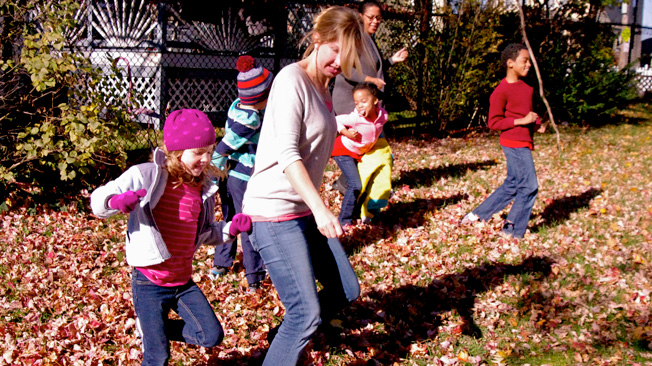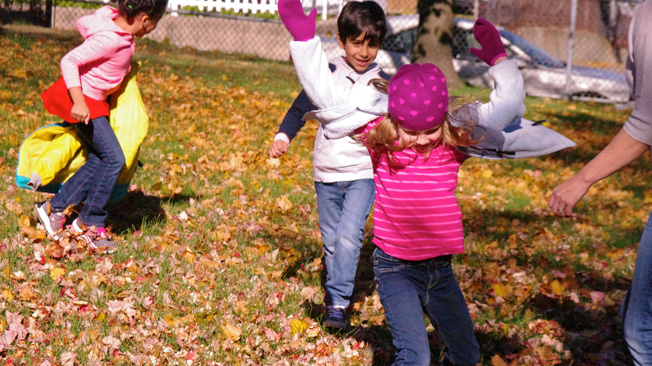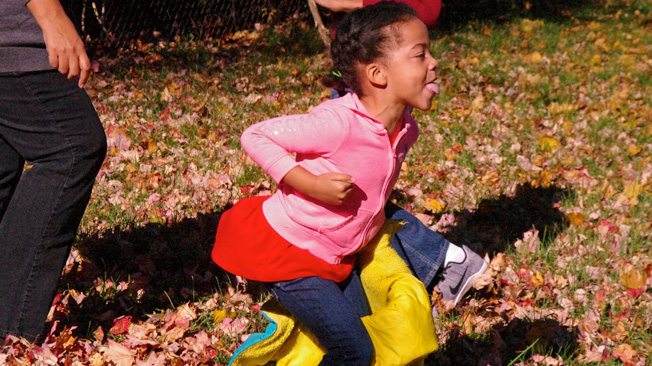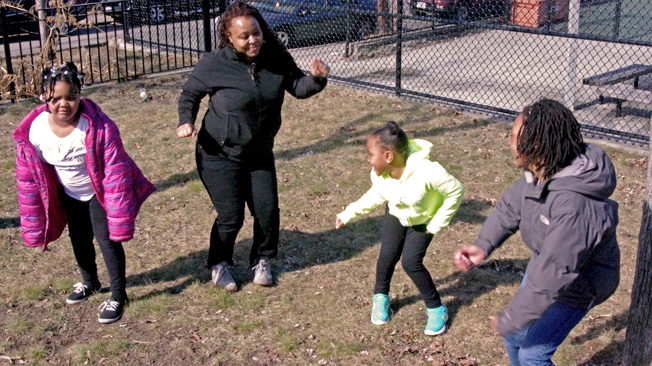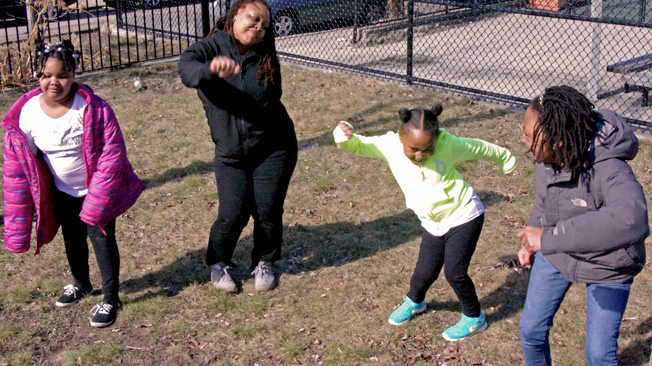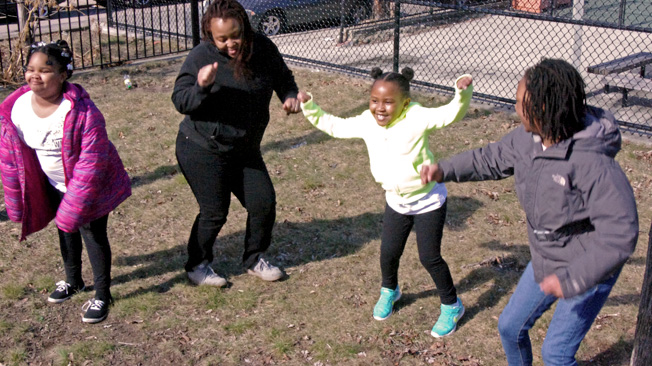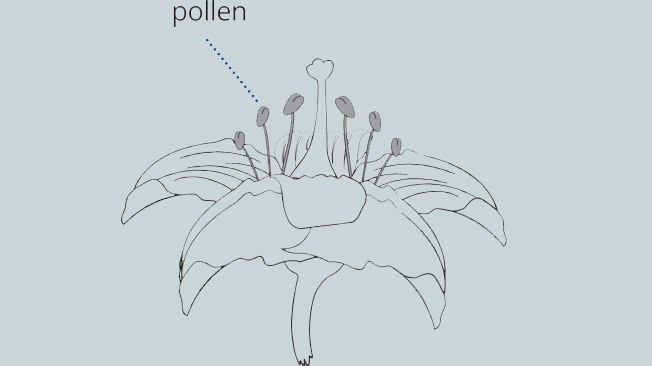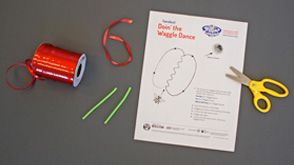Waggle Dance
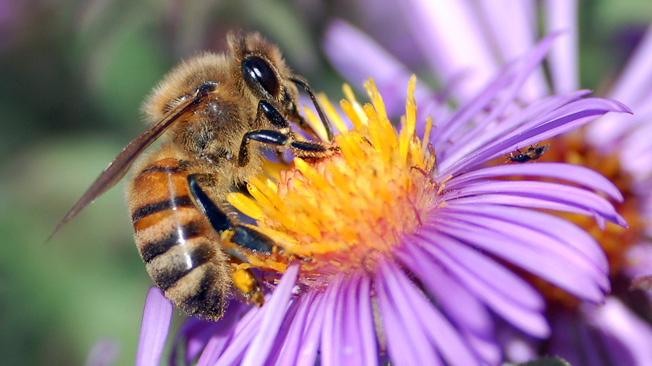
What Is This Activity?
How do busy bees "tell" each other where to find pollen? In this game, you and your child play bees who find "pollen" by doing a dance.
Go Outside 45 minutes
- Take your child to an enclosed outdoor area that has trees, bushes, and other places to hide objects—your backyard or a park, for example.
- (Optional if are flowers not in season.) On the way there, check out any flowers (without trespassing, of course). What colors are the petals? Which blooms are scented? Is there pollen (a white, yellow, or brown powder)? Any bees?
- Explain that pollen is food for bees. (It's a high-protein meal, like a burger; the flower's nectar is a sugary snack, like soda.) Bees find pollen by zeroing in on the color or scent of a flower. They collect what they can and then tell the bees back at the hive where to find it. Click through the photos above to see a drawing of a flower with pollen on it.
- Wonder aloud: Bees can't talk; so how do they "tell" the other bees where the pollen is?
- Demonstrate and practice the Waggle Dance (see diagram on handout), a simple way to understand how bees communicate. Look around for a source of human food (or, if there isn't a restaurant in sight, choose any object) and follow the steps on the diagram together to communicate its direction and distance.
- Play the Waggle Dance Game: Standing in the center of the play area, close your eyes and count to 10 while your child secretly hides a "flower" (the colored ribbon). Your child then returns to you and does the Waggle Dance. How fast can you find the flower?
- Repeat the game, switching roles if you like, until you're champion Waggle Dancers!
- Discuss: Where can bees in our city find flowers? Why do flowers make food for bees? What's in it for them? Explain that some of the pollen sticks to the bee's body and so gets carried to another flower. That flower uses pollen to make seeds, which can grow new flowers. Bees would starve without pollen and nectar from flowers; flowers would die out without bees to help them make seeds.
Explore Some More
The Brick-Eating Ivy Mystery
Watch this short video that shows another example of how plants and animals depend on each other to grow and survive. Gabi and Oliver explore whether ivy can really destroy buildings and cause them to collapse.
Go See Bees
Caution: Do not do this activity if your child is allergic to bees.
Where? Visit a local urban beekeeper who gives tours, a zoo, a science museum with a beehive on display, or an outdoor public garden with plenty of blossoms. Outdoors, watch the bees calmly from a safe distance. Bees won't sting unless they feel threatened.
Outdoor Family Fun with Plum App
This app gets families outdoors exploring the world. Every day, the app offers five outdoor missions to get everyone thinking and talking about nature and the science that's all around us.

